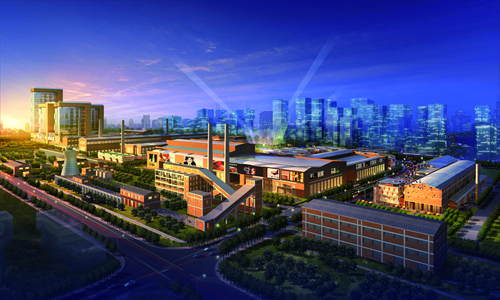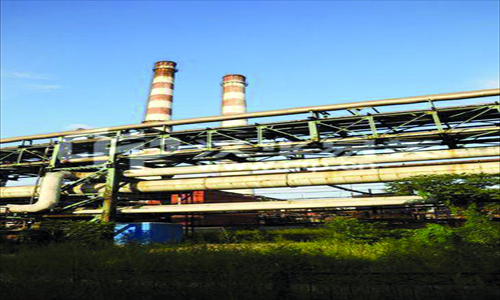Culture vulture


In October last year, the 2011 Beijing International Cartoon Week was launched in the old industrial base of Shougang (Capital Steel Group), the capital's steel factory in Shijingshan district. The fair drew the public's attention to cartoons. At the same time it drew attention to a project to turn this area into an industrial park for culture, arts and technology over the next decade.
He Huanmei, who is in charge of this project, revealed that the current goal they have set is to exceed the 798 Space both in terms of scale and diversity. "On top of the cartoon and animation industry, we will introduce technology companies that specialize in cloud computing, and telecommunication organizations like China Unicom," she said. "And our overall focus will be on culture and arts," He added.
He disclosed that once they receive official approval to use the land for commercial purposes, the construction of the park could happen very quickly. "I think we shall see it opening early next year," she told Metro Beijing. "This is a general plan and some other factors need to be considered when the construction is carried out." Metro Beijing decided to find out what those other factors are and whether the plans represent real competition for 798 and other cultural hubs.
Not built in a day
Like 798, the planners of Shougang want to make use of the old factories. Hong Feng, the director of the Association of Art Promotion of Songzhuang, an established industrial zone of culture and art in Tongzhou district, pointed this out. "Using old factories for constructing a cultural industrial park is not a new idea," he said. "798 is a good example of this and it has been successful."
Zhang Lei, an artist who worked at 798, also told Metro Beijing that the old factories are good resources that not only save money, but retain the local industrial history and culture. "We don't have many old factories in Beijing, especially ones like Shougang that lasted for decades," he said. "So places like this are good to preserve as a monument of the history of the area."
"It is a good thing that Shougang wants to become a new culture-orientated park," said Xu Dong, a director of an artistic photography workshop near 798. "It is especially good to fill in the empty gap in the west side of Beijing, where there is currently not much in terms of art and culture."
Xu's workshop is based in Caochangdi Art District, another one of the city's creative areas. Having settled there for years, Xu might be enthusiastic about the new project, but said that he would not consider moving to the Shougang industrial park. "A cultural industry needs time to grow and gain recognition in the field. The same will apply to Shougang," Xu explained. "I don't want to move there because Caochangdi is already established."
Xu is not the only one expressing this opinion. Hong said that both Songzhuang art zone and 798 had been around for ages before they became the great assembly places of culture and art. "Songzhuang, for instance, is no longer just a village for painters, but an artistic industrial park with diversified organizations and individuals in the fields of film and music," he said. "A culture of art has been fostered here and people have not moved elsewhere, even when they have been offered better and cheaper deals for artistic space in similar settings."
Get an edge
Therefore a cultural hub needs time to gain popularity. It also needs a specific focus that can set it apart from the other ones that exist in Beijing. Although He said the industrial park of Shougang will not be 798 in many respects, questions remained about just how different it will be.
"Beijing has more than 30 industrial parks of culture and each needs to have its own character, otherwise it's just a waste," Hong said. "In terms of Shougang, I think it really depends on whether the individuals or organizations that are doing this project have a good knowledge about the field." Hong explained that the park should stick with its historical edge of being an old factory instead of focusing on too many aspects and ending up being a place for all and yet none.
In Zhang's words, the park in Shougang must have something amazing to draw people there. "This park is really far beyond the city center, especially when you consider the traffic, so it needs something special to make people visit it over others," he said.
Xu also said that 798 and Songzhuang have their own characteristics and Shougang should do the same. "Many places throughout China have been inspired by 798, but without being different, they have not succeeded," he said. "I feel that Shougang should not be too commercial as it is not good for cultivating culture of all different kinds." Xu added that 798's rising commercialization is making some individuals and organizations move out elsewhere. Maybe Shougang can learn from this.
It may be too early to draw any conclusions about the impact this new cultural zone will have on western Beijing. As Hong said, places like 798 only had a few artists settling there in the beginning. Who knew that within a few years it would be turned into one of the most influential art and cultural zones in town? Shougang is therefore one to watch.